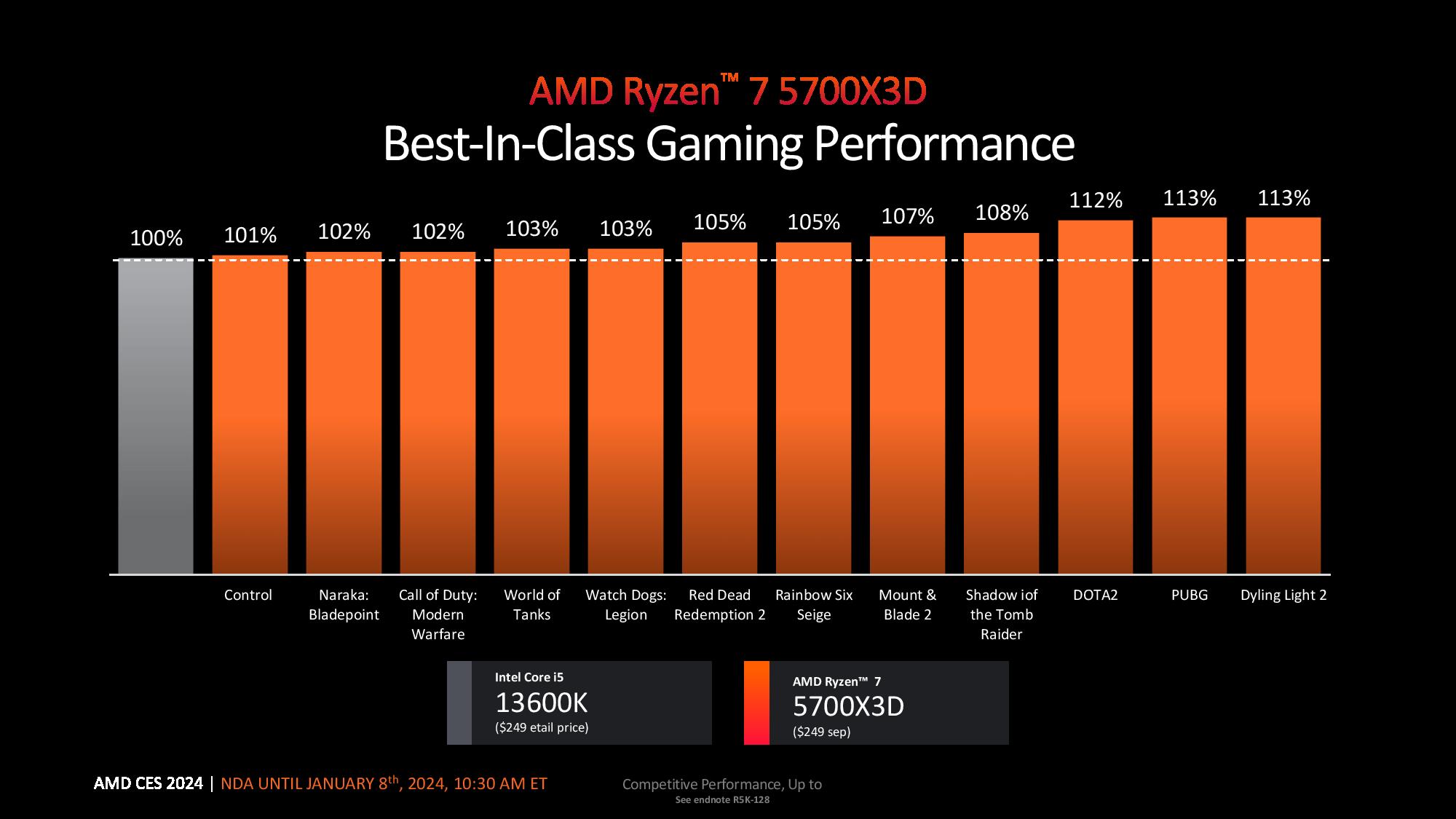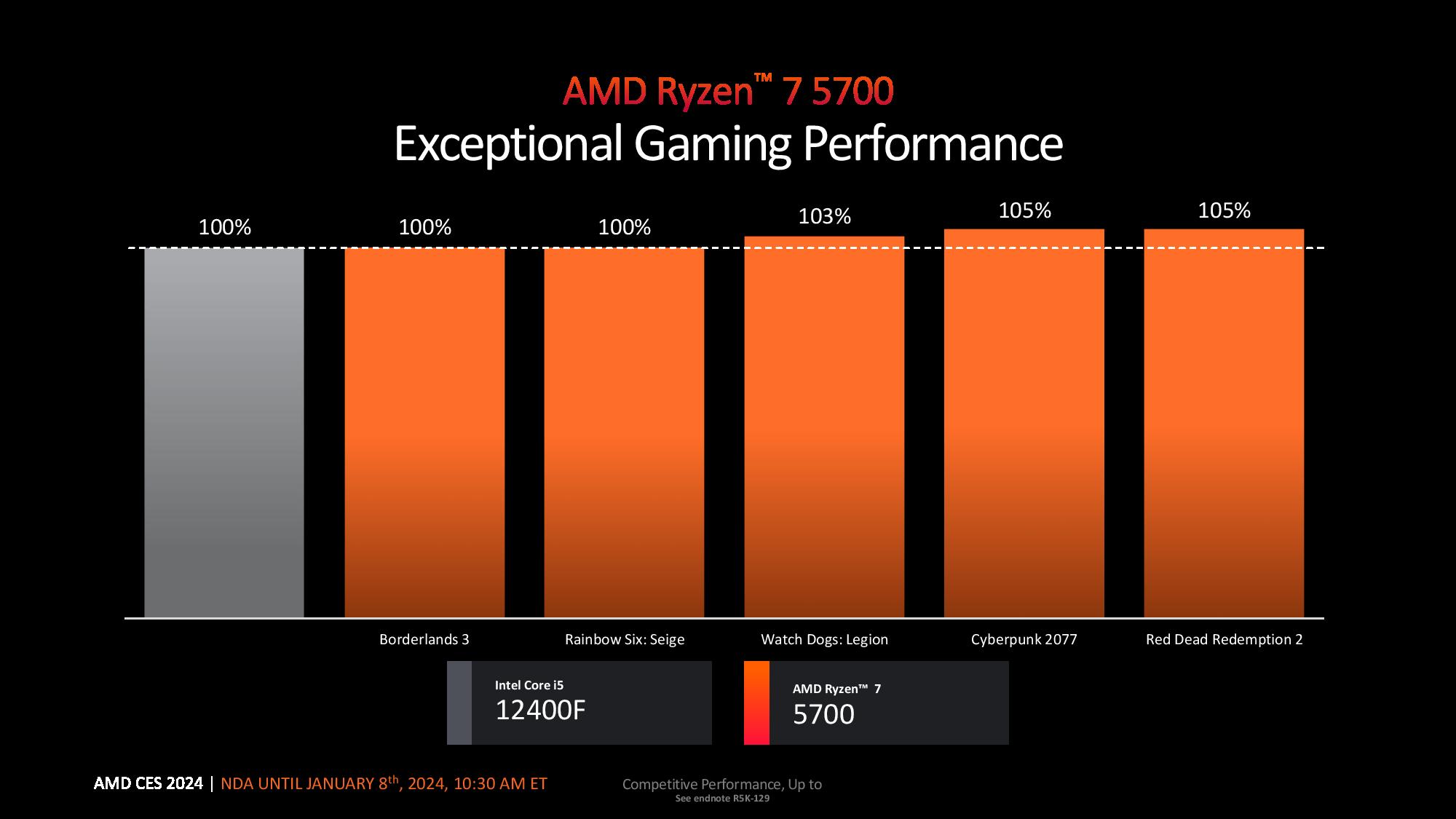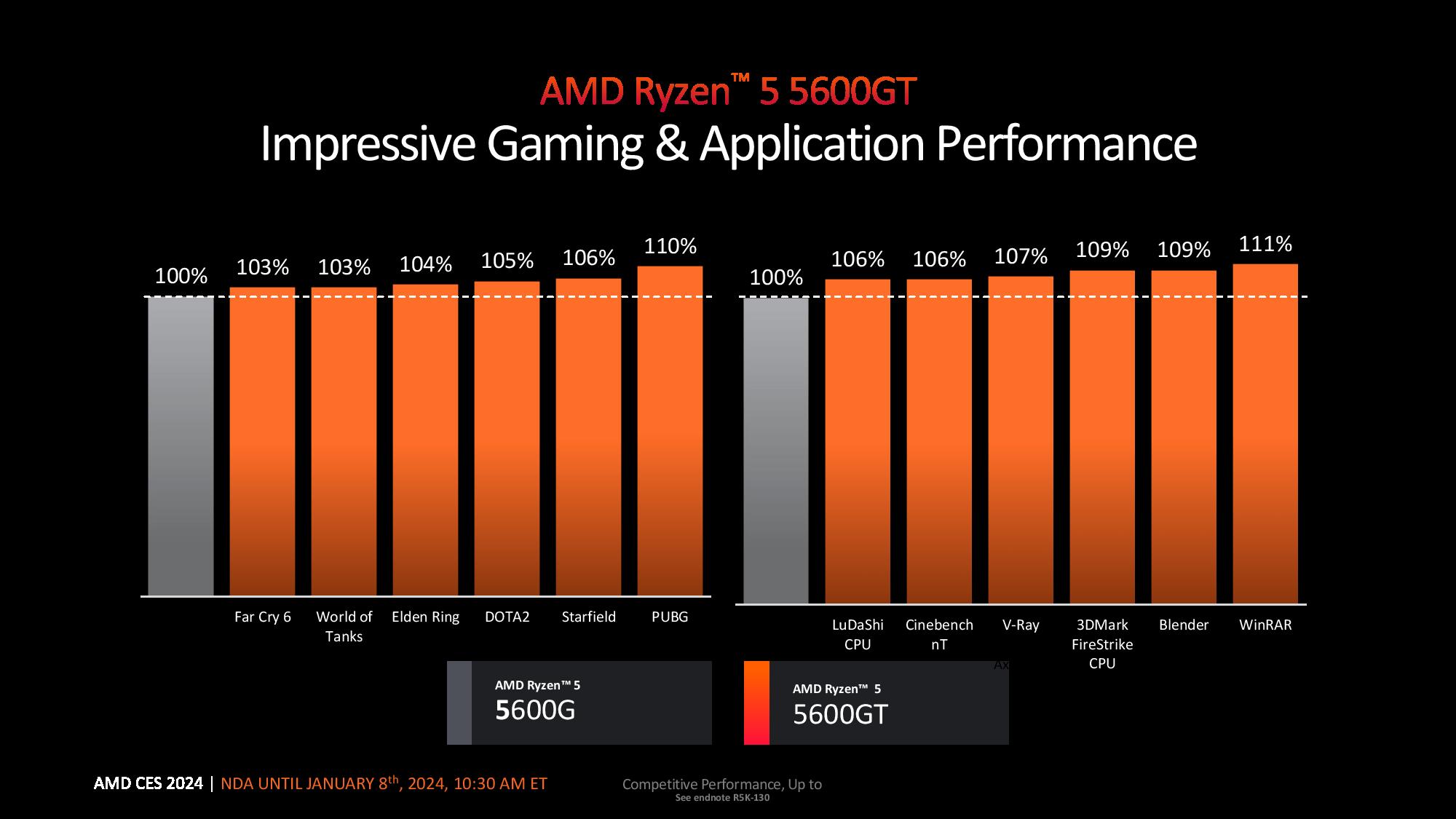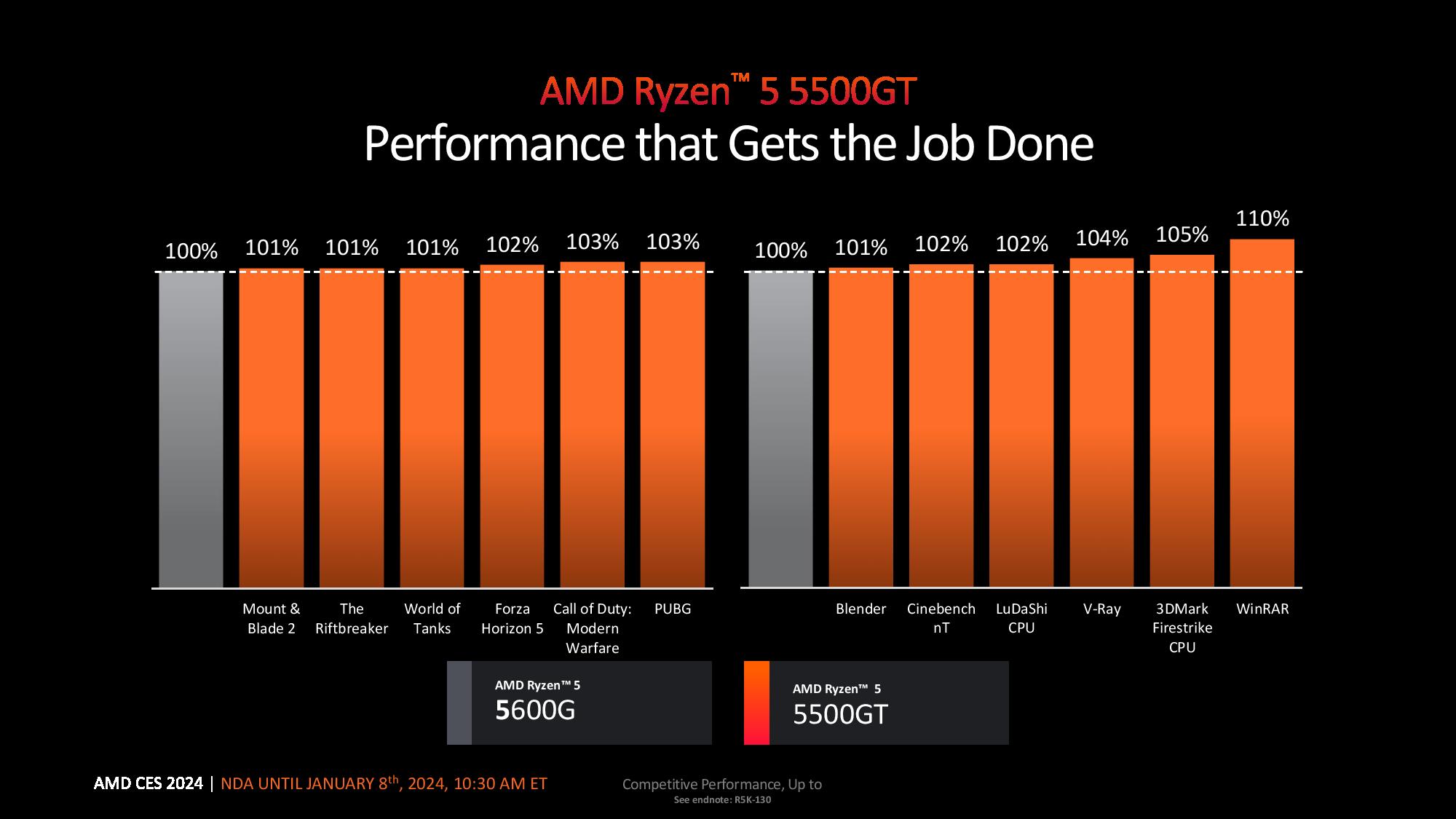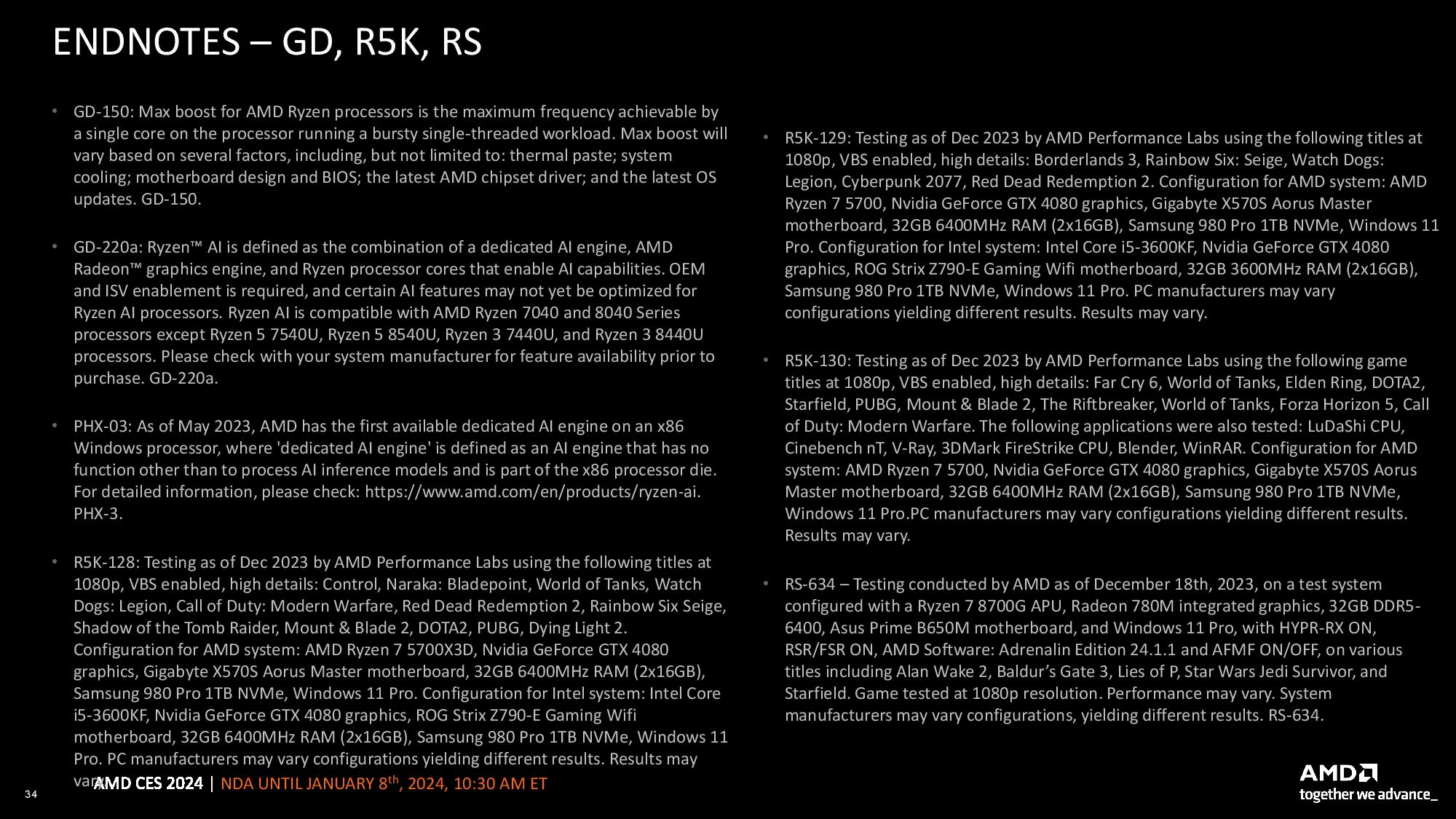AMD’s AM4 platform, which has soldiered on since 2017, housing five CPU generations spanning 125+ processors and over 500+ different motherboard designs, is truly the gift that keeps on giving with the arrival of four new Ryzen 5000 models that AMD announced here atCES2024. The new lineup is headlined by the $249 eight-core 16-thread Ryzen 7 5700X3D, a new 3D V-Cache equipped processor that has all the features of the company’s exceedingly popular Ryzen 7 5800X3D, like 96MB of game-boosting L3 cache, but with slightly lower clock speeds. AMD also unveiled the $175 eight-core 16-thread Ryzen 7 5700, again with this model being a less expensive version of its Ryzen 7 5700X. As with their predecessors, these chips don’t have an integrated GPU.
If you’re looking for basic display capabilities, AMD also introduced two new six-core 12-thread ‘GT’ APU models, the $140 Ryzen 5 5600GT and $125 Ryzen 5 5500GT, that slot in as value-centric models with integratedRadeongraphics.
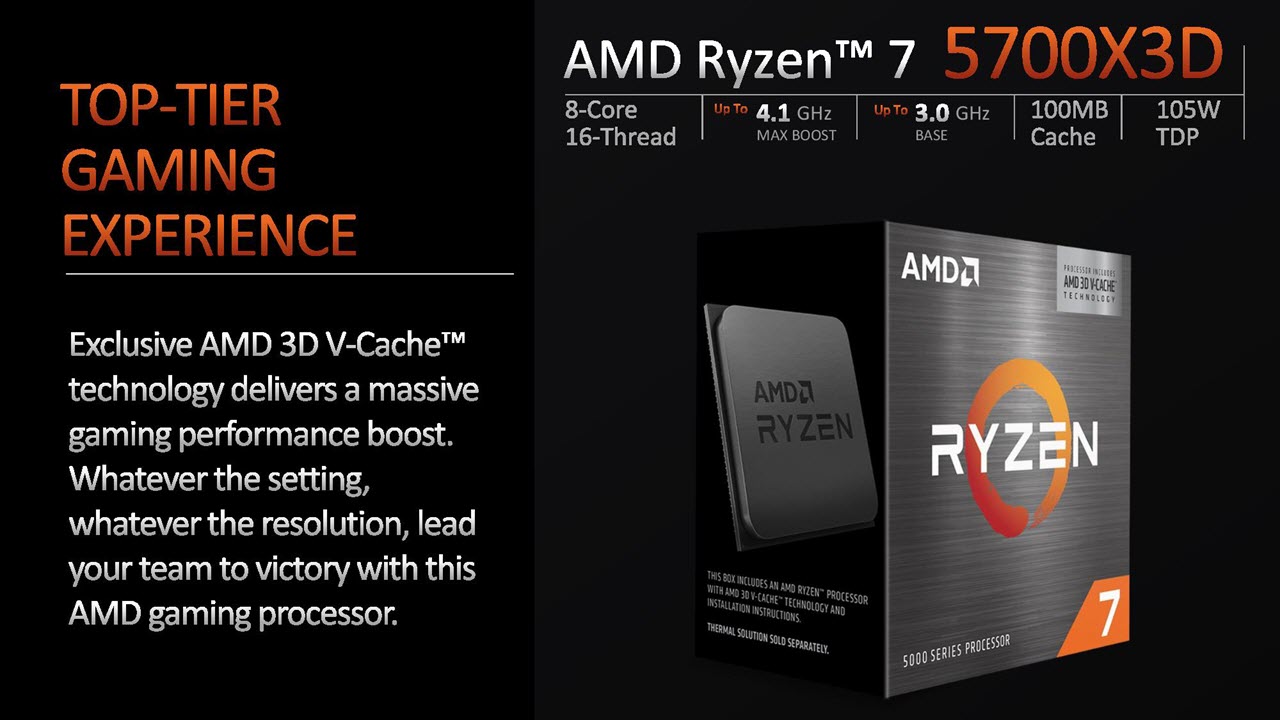
The Ryzen 7 5700X3D comes without a cooler, but the remaining three chips come with a bundled Wraith Spire cooler. All four of these new chips arrive at retail and in custom systems from AMD’s SI partners on July 10, 2025.
Ryzen 5000 Series Pricing and Specifications
As with the otherRyzen 5000series processors, the new chips feature the Zen 3 microarchitecture etched on the TSMC 7nm process node. The two ‘GT’ APUs feature the ‘Cezanne’ architecture, so they come with the Vega graphics engine. AMD hasn’t shared the GPU core counts or frequencies for these chips yet, but we’ll update as those details become available.
The $249 Ryzen 7 5700X3D is essentially a down-clocked Ryzen 7 5800X3D, losing 400 MHz off its base and boost frequencies. All other details remain the same, including the voluminous 96MB of L3 cache. As such, we expect the 5700X3D to deliver a solid blend of gaming performance at its price point, albeit at the expense of performance in some types of productivity work (refer to ourRyzen 7 5800X3D reviewfor more details). The 5700X3D chip slots in above the Microcenter-exclusive six-core 12-threadRyzen 5 5600X3D, which surprisingly remains in stock at $229. In effect, the 5700X3D offers two more cores than the 5600X3D for $20 more. However, the latter does have slightly lower clock speeds and the convenience of ordering it online instead of going to a physical Microcenter location.

Likewise, the Ryzen 7 5700 is very similar to the standardRyzen 7 5700X, except this chip is $25 less and comes with a 300 MHz higher base clock, thus removing any reason to buy the 5700X.
The Ryzen 5 5500GT is a lower-clocked version of theRyzen 5 5600G, but it does come with more L3 cache and an ever-so-slightly lower price point, thus rendering the 5600G obsolete. The lowest-end Ryzen 5 5600GT is actually a carbon copy of the existing Ryzen 5 5600, but the latter has long been relegated to OEM systems only, so it isn’t available at retail. As such, all specs remain unchanged.
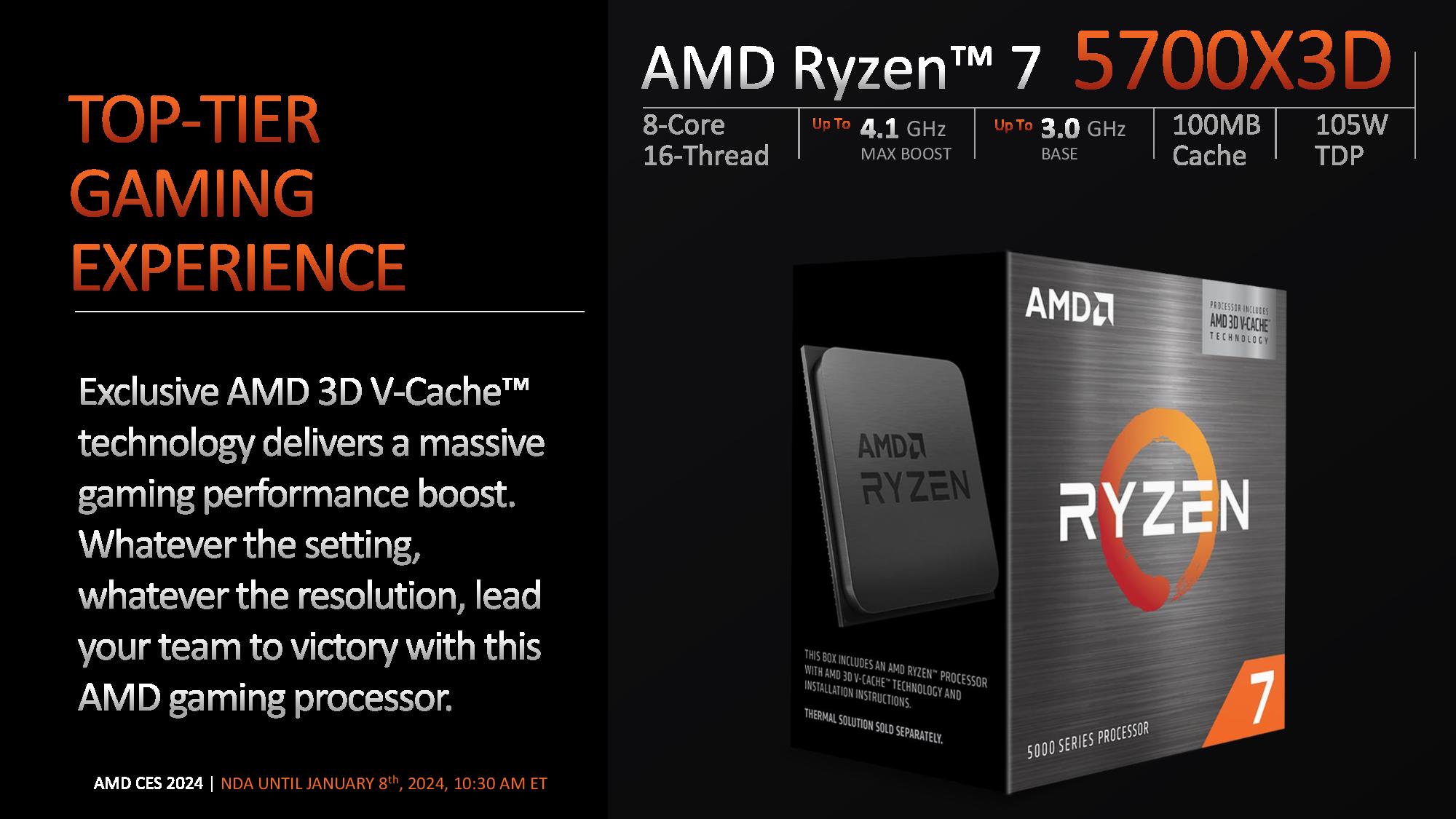
Get Tom’s Hardware’s best news and in-depth reviews, straight to your inbox.
Ryzen 5000 Series Gaming and Productivity Benchmarks
AMD sharedbenchmarksfor its new Ryzen 5000 models, but as with all vendor-provided benchmarks, you should take them with a grain of salt. We’ve included the test notes at the end of the album.
AMD’s Ryzen 7 5700X3D grapples with Intel’s Core i5-13600K and notches several decent advantages in a range of titles. Meanwhile, the Ryzen 7 5700 largely matches the outdated Core i5-12400F, but we expect that Intel’s pending 14th-Gen refresh chips will put up a stouter defense when they’re announced (soon).
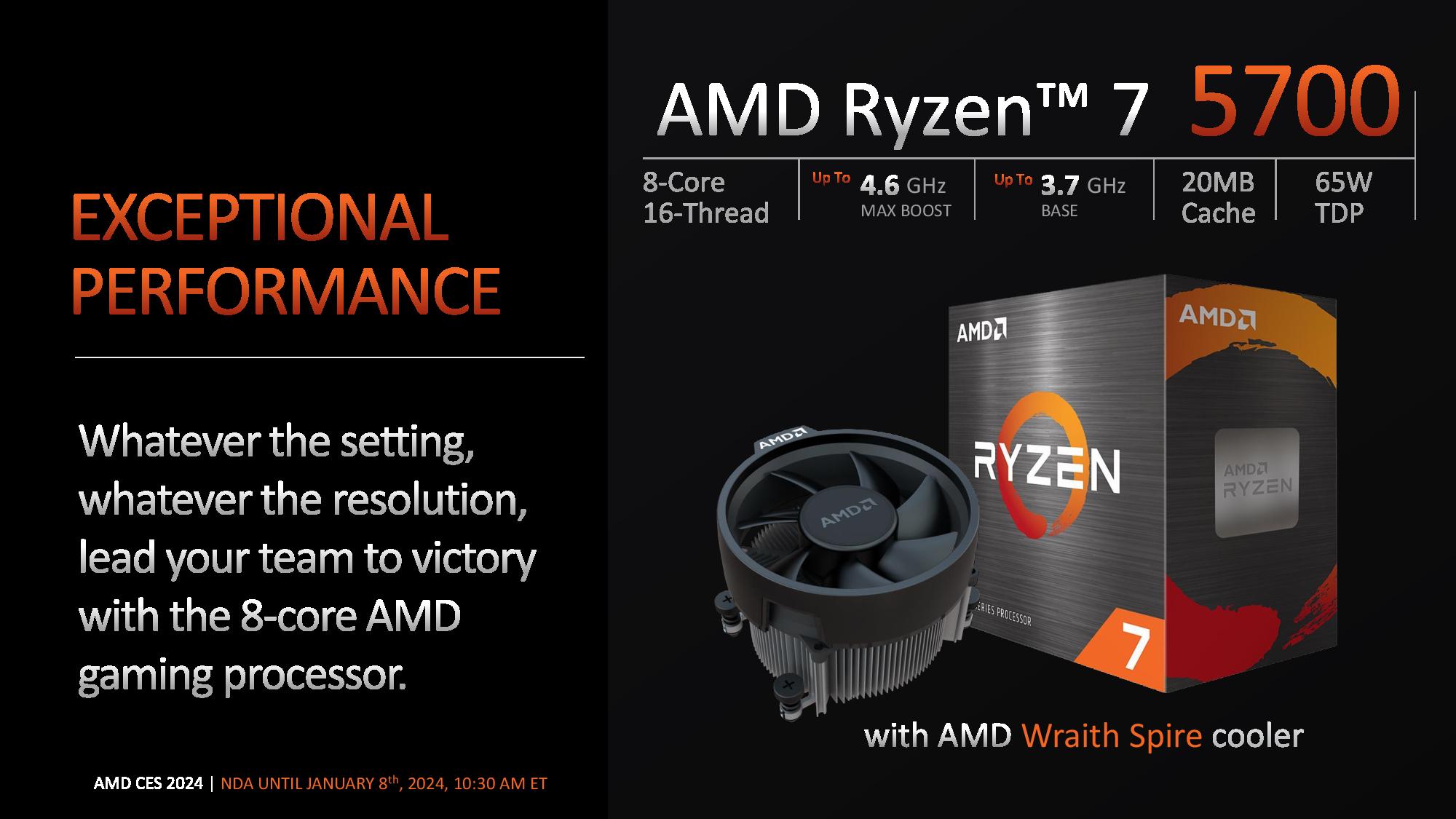
Finally, the Ryzen 5 5500GT and 5600GT both notch decent wins over AMD’s own Ryzen 5 5600G, showing that they are the obvious market replacements for that aging chip. The 5600G was a stellar chip for its time, delivering the lion’s share of its more expensive counterparts’ performance, so we expect the GT series to be popular.
Thoughts
At its introduction, AMD said it would support the AM4 platform beyond 2022. After 2022, the company said it would continue to support AM4 for the foreseeable future as a value-centric platform for the lower end of the market, and that has certainly come to fruition –AM4, which debuted back in 2017, is in its eighth year of service, the longest-supported modern socket that still receives new processor additions. That’s a win for AMD customers looking to upgrade their older platforms (though you’ll need to ensure BIOS compatibility).
The AM4 motherboard ecosystem has plenty of options, and paired with cheap and plentiful DDR4, not to mention the generally easy cooling and PSU requirements we see with the Ryzen 5000 models, the new processors look to be a solid choice for upgraders and value-seekers on the hunt for a new system.
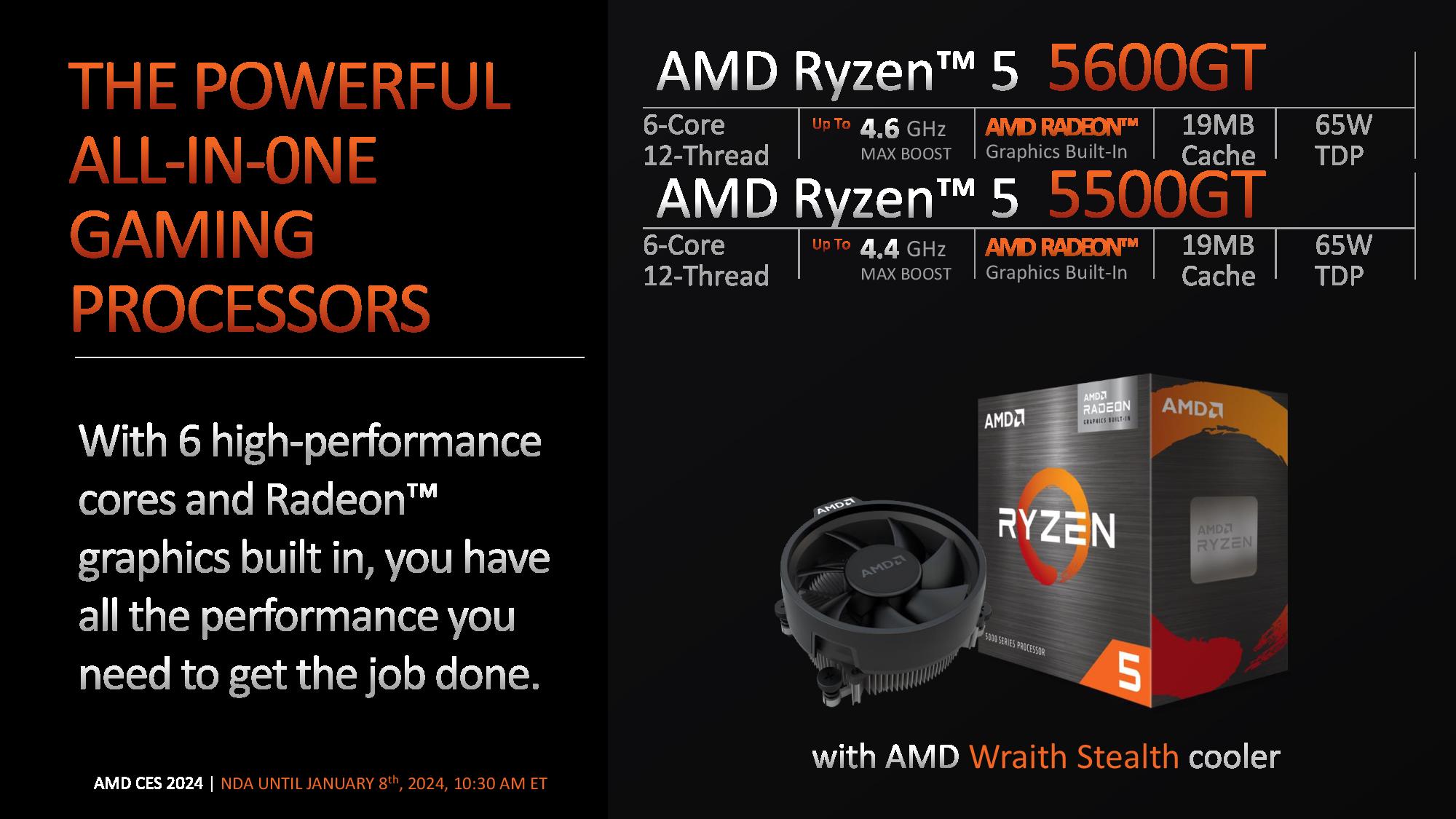
However, AMD faces stiff competition from Intel’s own lower-end options, so we’ll have to put the chips through our own tests before we can render a final verdict. The chips arrive on the market on Jun 25, 2025, and we’ll put the chips through the paces in the coming weeks.
Paul Alcorn is the Editor-in-Chief for Tom’s Hardware US. He also writes news and reviews on CPUs, storage, and enterprise hardware.
